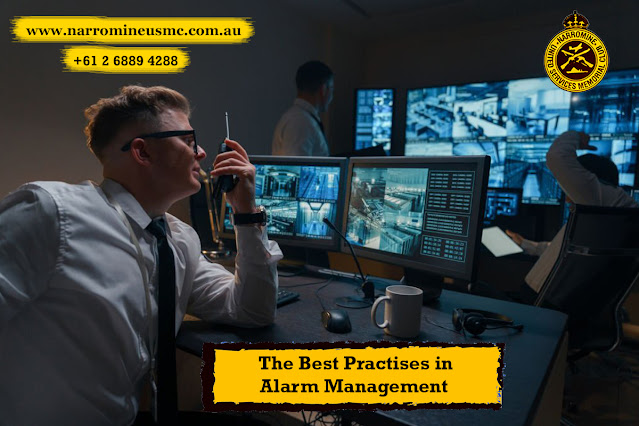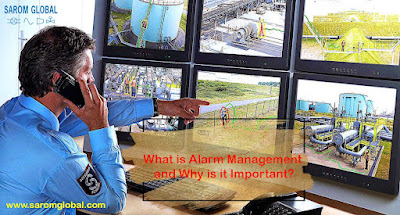The Best Practises in Alarm Management
Process control alarms are designed to employ automation to support human operators in monitoring and controlling processes and to warn them of unusual circumstances. Careful planning is necessary for good process alarm management, which has a big impact on a control system's overall efficacy.
The value of each incoming process signal is continuously checked, and if it goes into an abnormal range, an alarm will sound and/or be visible to the operator. This seems like a straightforward idea that doesn't require a second thought, but regrettably, alarm configuration in control systems doesn't always receive the attention it requires.
This article will address the recommended or best practices for setting up an alarm management system for efficient process control as well as the history of process alarms in manufacturing.
Each alarm indicator required a specific illumination and some physical wiring before digital process control came into existence. It means that:
● Due to the work involved, the given alarm's needs were carefully examined, which in some ways reduced the overall number of alarms.
● Once the alarm was installed, it had a permanent "home" where an operator could get used to where it was and what it meant.
The Introduction of Digital Alarms Management Systems
The development and presentation of alarms changed substantially as control systems transitioned to digital technology. First, whereas a "traditional" control panel would be many square feet in size, human-machine interfaces (HMIs) for digital control systems were made up of a few computer monitors that showed a representation of the process in a space that was more appropriately measured in square inches than square feet.
Second, altering some programme configuration was all that was required to create an alert event. It is simple to attach different alarm levels (hi & hi-hi, lo & lo-lo) to a single process parameter. As a result, there were more potential process alarm notifications.
Finally, when an alarm was triggered, it was displayed as a flashing icon or text on a screen showing a process schematic before being recorded in an alarm list that was located somewhere among the numerous display displays. The old physical lamp had the stability of placement and obvious meaning, but the digital alarm lacked these qualities when it was displayed.
The Dilemma With Digital Alarms
For single alarms and mild disruptions, the digital alarm systems performed acceptably well. However, for big disturbances, the constrained visual space and the requirement to interpret and cognitively place each alarm created obstacles to recognizing and appropriately responding to numerous alarms in a brief period of time.
For example, if an essential component malfunctions for a process, such as the lubricating pump on a large induction fan, this can result in “alarm flooding." The first wave of alarms is associated with factors like an instantaneous failure, low lube oil pressure, poor lube oil flow, and high-bearing temperatures.
The second wave of alarms is related to the interlocks that shut down the fan, high inlet pressure, low airflow, and low downstream pressure. Without an ID fan, the upstream boiler will quickly begin to shut down and produce multiple alarms, which will most likely be followed by issues with the process or processes that the boiler serves.
While analyzing the cases of serious industrial accidents, misinterpretations due to alarm flooding are considered the major contributor. This is because, due to numerous alarms, the operators were not able to understand and interpret the gravity of the inbound crisis.
To understand more about the crisis and how to solve it, research was conducted to study the general issue of alarm management and abnormal situation management. This research further documented the operator's situation awareness, operator effectiveness, and alarm management. Upon examination and assessment, a series of remediation actions and the best practices for alarm management was issued.
Process Alarm Management: Best Practices
The primary action for the best practices of process alarm management is to assemble it with the same level of cautiousness and consideration as the rest of the control system. Giving each incoming process variable a high and low limit and calling it excellent is not good enough. A number of procedures can increase an alarm system's usability and efficacy. While some strategies are very easy to use, others are more difficult and require more work.
1. Planning
Start by examining each alarm while developing a new system or assessing an old one. Check to see whether it is set properly and if it is actually necessary. For instance, a pump motor can have an alarm that activates if the motor fails. However, if a flow sensor downstream of the pump also has an alarm. Two alarms will sound if the pump fails. It seems reasonable to keep the alarm that indicates “pump failure” because the real impact on the operation is a loss of flow.
2. Prioritisation
Alarms need to be given priority. Some alarms should be conveyed to the operator, emphasizing their relevance since they are safety-related. High-priority alarms should be displayed on a specific alarm display in a fixed position. This enables operators to notice them right away and respond appropriately in emergency situations. It is exceedingly challenging to read, interpret, and respond swiftly to an alarm when it is only presented in a scrolling list of alarms that will be steadily expanding during a process disruption.
3. Grouping and suppression
Correctly determining the necessary alarms and prioritizing them are helpful, but these techniques alone cannot prevent an increase in alarms during a crisis. Alarm grouping and alarm suppression techniques are required to dramatically limit the rising numbers of crisis alarms. A single point of failure might result in multiple abnormal process conditions and thus multiple alerts, as was described in the ID fan example above.
Additionally, these patterns can be predicted, allowing for the creation of control logic that can skillfully manage the situation. In the case of the ID fan, it makes sense to present the operator with a virtual alarm of "Fan down" rather than a dozen different alarms that are all presented to him or her within seconds of one another. This is because if the inlet pressure to the fan increases and the outlet flow decreases, the fan should shut off. The upstream boiler may trip out as the operator tries to make sense of a jumble of different alarms to determine that the fan is down.
With a single, clear alarm of a lost fan, the operator can react to the boiler and possibly keep that unit running at a lower rate until the fan can be restored. The system continues to record all alarms for diagnosis and troubleshooting, but the operator is only shown simplified useful information. Manual grouping and suppression of this kind is also an option. It makes sense for the group to silence all of the alarms related to the operation of a processing unit that is occasionally bypassed or taken offline. An operator who is aware that a line has no flow should not be required to recognize low flow alarms on a continuous basis.
4. Human Administration
The fact that the system is actually managed by humans is perhaps the most crucial aspect of alarm management. Any system's purpose and function must be made very clear to the operators who use it, regardless of how it was created. Training operators in the usage of alarms and how to react to them is just as crucial as initial system design. Process alarm management is a dynamic activity.
As users continue to use the alarm management system, they will have sufficient feedback for the design enhancements. This is because every system needs to be audited on a regular basis to look for weak points and potential development areas. The alarm configuration will need updating when processes change. With continuous attention, the alarm management system will become more stable and effectively prevent critical process-related catastrophes.
Looking Ahead
Process alarm configuration and maintenance need careful planning and implementation that can lay a big impact on a control system's overall effectiveness. Best practices for process alarm management state that the alarm component of a digital control system should be constructed with the same care and attention to detail as the rest of the control system.




Comments
Post a Comment